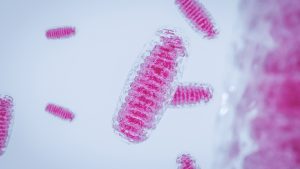
Pioneering research has discovered that mitochondria play a vital role in a process that causes Parkinson’s disease, providing fresh insights into neurogenerative conditions.
Carried out by researchers from Gladstone Institutes, the study has signified that mitochondria – the power-plant-like energy suppliers of the cell – conduct a pivotal function in the development of Parkinson’s disease, potentially aiding in designing new treatments and strategies to prevent and treat the illness.
Their research is published in the journal Science Advances.
For decades, scientists have understood that living cells are incredibly proficient at recycling, breaking down old parts of their structure to become new, improved molecular machines. Now, Gladstone researchers have examined the life cycle and recycling of mitochondria in the brain, identifying that the genes that assist in conducting these processes are closely associated with Parkinson’s disease.
Ken Nakamura, MD, PhD, the senior author of the study, said: “This work gives us unprecedented insight into mitochondria’s life cycle and how they are recycled by key proteins that, when mutated, cause Parkinson’s disease. It suggests that mitochondrial recycling is critical to maintaining healthy mitochondria, and disruptions to this process can contribute to neurodegeneration.”
The importance of mitochondria recycling
For the vast majority of cells within the human body, mitochondria are decomposed when they are damaged in a process called mitophagy, which is caused by two proteins that also cause hereditary types of Parkinson’s disease, PINK1 and Parkin. Both of these proteins have been analysed comprehensively in mitophagy for many cell types; however, it is still vague as to whether they behave the same way in neurons, which are the types of cells that die in Parkinson’s disease.
Characteristically, neurons have incredibly high energy demands compared to other cells, with their mitochondria being much more resistant to degradation by Parkin than different cell types. Because of this enigmatic behaviour, the team examined mitochondria inside living neurons to see how they are affected by PINK1 and Parkin, although this was extremely challenging as mitochondria are small and move around in cells, fusing or splitting in two, making them difficult to observe.
“We had to develop a new way of tracking individual mitochondria over long periods of time, almost a full day,” said Zak Doric, a graduate student at Gladstone and UC San Francisco (UCSF) and co-first author of the new study. “Getting that technique up and running was quite a challenge.”
Additionally, the researchers utilised a technique that enabled them to produce larger-than-normal mitochondria, which made them easier to examine under a microscope. The researchers determined that Parkin proteins surrounded damaged mitochondria and targeted them for degradation, showing that neuron mitophagy starts here the same way as other cell types. The novel technique allowed the scientists to monitor the process closely, observing the initial steps where damaged, Parkin-coated mitochondria bind to other parts of the cell to create mitolysosomes – mitochondria-degrading structures.
Nakamura said: “We were able to visualise these steps at a level that hasn’t been done before in any cell type.”
Subsequently, the high-resolution of their new technique enabled the team to understand how the Parkin and PINK1 proteins affect mitochondrial degradation in Parkinson’s disease.

Impact on Parkinson’s disease
Next, the team investigated the later stages of mitophagy, studying the effects on mitochondria in the mitolysosomes.
“Until now, nobody has known what happens next to these mitolysosomes,” commented Nakamura.
The common understanding, until now, was that mitolysosomes break down quickly into molecules which can then be utilised by the cells to construct new mitochondria; contrastingly, the team discovered that mitolysosomes could survive for several hours within a cell. Some of the mitolysosomes were engulfed by healthy mitochondria, whereas others suddenly burst, emitting their content into the interior of the cell, some being proteins that were still functional.
Huihui Li, PhD, a Gladstone postdoctoral scholar and co-first author of the study, said: “This appears to be a new mitochondrial quality control, recycling system. We think we’ve uncovered a pathway of mitochondrial recycling—which is like salvaging valuable furniture in a house before demolishing it.”
Most notably, the investigation demonstrated that the recycling pathway requires PINK1 and Parkin, suggesting that mitochondrial recycling may be crucial in protecting against Parkinson’s disease.
“Dopamine neurons that die in Parkinson’s disease are particularly susceptible to mutations in PINK1 and Parkin,” said Nakamura. “Our study advances our understanding of how these two key Parkinson’s disease proteins degrade and recycle mitochondria. Our future studies will investigate how these pathways contribute to disease and how they can be targeted therapeutically.”







